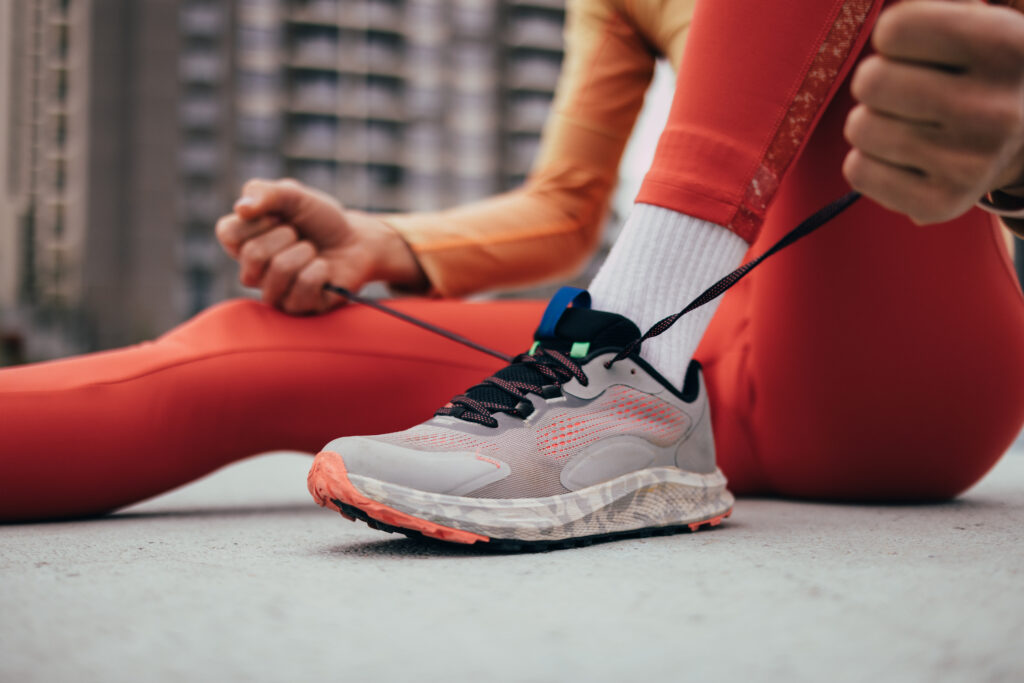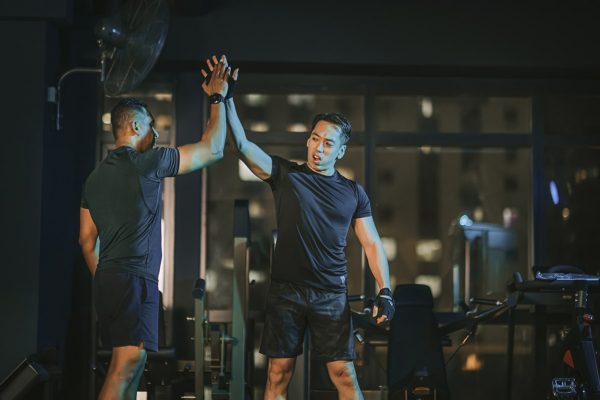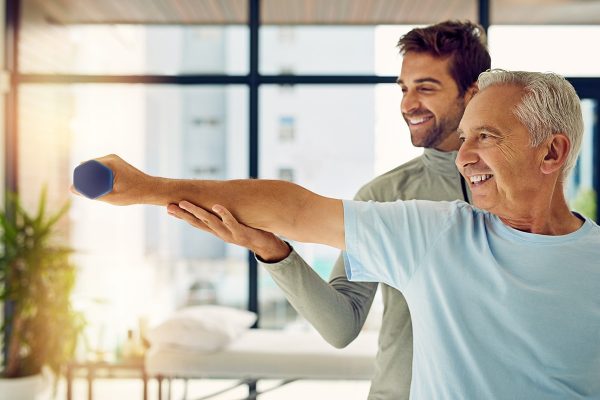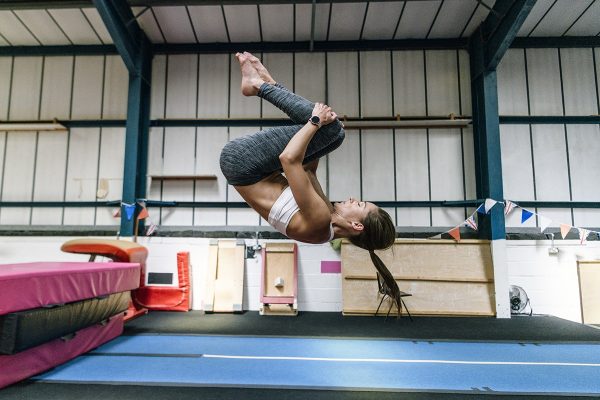Footwear may seem like a minor detail in an exercise routine, but it plays a crucial role in performance, comfort, and injury prevention. As a kinesiologist, I often see the consequences of improper footwear: knee pain from lack of arch support, ankle instability from worn soles, or even chronic back discomfort caused by poor cushioning. Choosing the right shoe for your specific training type is not just about fashion — it’s about function and safety.
The Role of Footwear in Exercise
Footwear acts as the first line of defense between your body and the surface you train on. According to Nigg (2010), shoes influence how forces are transferred through the lower limbs, impacting biomechanics such as gait, posture, and load distribution. Each type of exercise places different demands on the body, requiring shoes that support those specific movements. Using running shoes in a weightlifting session or minimalist shoes in a high-impact aerobics class can compromise your alignment and stability.
1. Running: Cushioning and Shock Absorption
Running generates high-impact forces, especially during heel strike. Therefore, running shoes should have good shock absorption, arch support, and a snug heel fit. Most modern running shoes are designed with foam midsoles to reduce joint stress. The American College of Sports Medicine (2022) emphasizes that runners should choose footwear based on their foot type (neutral, overpronated, or supinated) and running gait. Those with flat feet may benefit from motion-control shoes, while high-arched runners might need cushioned shoes.
Additionally, replace running shoes every 500–800 kilometers to ensure proper cushioning remains intact (Richards, Magin, & Callister, 2009).
2. Weightlifting: Flat and Stable Soles
Unlike running, lifting weights—especially heavy ones—requires maximum ground contact and stability. Shoes designed for lifting have hard, flat soles to minimize energy loss and improve force transfer. Elevated heels in Olympic lifting shoes can also aid in squatting mechanics by increasing ankle dorsiflexion, allowing a more upright torso position (Sato, Fortenbaugh, & Hydock, 2012).
Wearing running shoes during weightlifting can lead to instability due to their compressible soles, increasing the risk of knee valgus and ankle rolling. Flat-soled shoes like Converse, or specialized lifting shoes, provide the foundation needed for safe and effective lifts.
3. Cross-Training: Versatility and Lateral Support
Cross-training workouts, such as HIIT, circuit training, or boot camps, involve a mix of jumping, running, lateral shuffling, and lifting. Cross-trainers are hybrid shoes that offer moderate cushioning, lateral stability, and traction to handle multi-directional movements (Behm & Sale, 1993).
Unlike running shoes that are optimized for forward motion, cross-trainers have a broader base and more rigid sole, preventing ankle sprains during side-to-side movements. For gym-goers who mix strength and cardio in one session, cross-training shoes are a practical and safe choice.
4. Group Fitness Classes: Grip and Flexibility
Classes such as Zumba, step aerobics, or dance fitness require dynamic movements, pivoting, and quick directional changes. Footwear for these classes should offer a blend of grip and glide. Too much traction can strain the knees during twists, while too little can lead to slips. Lightweight shoes with a low profile and pivot points on the sole (like dance sneakers) are ideal (Krabak, Roberts, & Zemper, 2011).
For step classes, cushioning is also essential to reduce repetitive joint impact, especially for the knees and lower back.
5. Walking or Low-Impact Exercise: Comfort and Support
For walking or gentle exercise like yoga or Pilates, comfort, flexibility, and arch support are key. Walking shoes are usually lighter than running shoes but still provide cushioning and heel support for extended periods of upright posture. For yoga and Pilates, barefoot or grippy sock alternatives allow for better connection with the floor, enhancing proprioception and balance (Cunningham & Sluka, 2010).
Final Tips for Choosing Footwear
Try shoes on later in the day when your feet are slightly swollen to ensure the best fit.
Bring your workout socks when trying on new shoes to get a realistic feel.
Replace shoes regularly based on use and wear patterns — even before visual breakdown, the internal support can degrade.
How We Can Help
Working with exercise professionals, such as kinesiologists or personal trainers, can ensure that you execute exercises with proper form and alignment. Professional guidance reduces injury risk and maximizes effectiveness.
At CARESPACE, we are focused on a holistic approach to health and helping clients like YOU reach your individual health goals. Whether you’re new to exercise or looking to optimize your routine, our team of kinesiologists and fitness trainers can help you incorporate flexibility, range of motion training, and other physical activities into your lifestyle safely and effectively.
Call or book online today to learn more about how we can support you in reaching your health and fitness goals!
Conclusion
Investing in the right footwear is investing in your physical health and performance. As a kinesiologist, I see firsthand how proper shoes can prevent injury, improve movement efficiency, and boost confidence during exercise. Match your footwear to your training type and individual biomechanics — your body will thank you.
References
American College of Sports Medicine. (2022). Selecting running shoes. Retrieved from https://www.acsm.org
Behm, D. G., & Sale, D. G. (1993). Intended rather than actual movement velocity determines velocity-specific training response. Journal of Applied Physiology, 74(1), 359–368. https://doi.org/10.1152/jappl.1993.74.1.359
Cunningham, M. B., & Sluka, K. A. (2010). Proprioception and pain: A literature review. Physical Therapy Reviews, 15(3), 195–203. https://doi.org/10.1179/174328810X12774621219615
Krabak, B. J., Roberts, W. O., & Zemper, E. (2011). Footwear in fitness and running. Current Sports Medicine Reports, 10(4), 210–215. https://doi.org/10.1249/JSR.0b013e318223ec08
Nigg, B. M. (2010). Biomechanical and physiological aspects of running shoe and orthotic function. Sports Medicine, 40(11), 939–957. https://doi.org/10.2165/11535870-000000000-00000
Richards, C. E., Magin, P. J., & Callister, R. (2009). Is your prescription of distance running shoes evidence-based? British Journal of Sports Medicine, 43(3), 159–162. https://doi.org/10.1136/bjsm.2008.046680
Sato, K., Fortenbaugh, D., & Hydock, D. S. (2012). Kinematic changes using weightlifting shoes on barbell back squat. Journal of Strength and Conditioning Research, 26(1), 28–33. https://doi.org/10.1519/JSC.0b013e318218dd04





